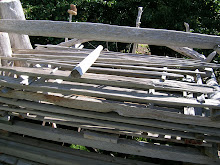 Dahl dash dot dish day
Dahl dash dot dish day These circuits intend to encourage deeper attention, along any whim or direction that invites exploration,
listening to a quiet voice within that says, “I’m not done yet.”
The act of borrowing…
Ah ha
Everything is derivative by its very nature.
In fairness to mother nature our behaviors and thoughts all derive from living webs and patterns. We record a natural trajectory.
Meaning derives from nature. Intensity of interest, another matter.
Feel encouraged that play derives from nature. Celebrate borrowing ideas, giving credit, and elaborating. Celebrate lending ideas and seeing them unexpectedly elaborated by others.
Elaboration Exercise # 1: Copy(catt/dogg)ing
Take some activity that someone else does. Hopefully choose it because energy draws toward it. We hesitated because we didn’t want to copy them. This time celebrate copying playfully as an initial activity. Go ahead and do this; even involve others. Explain that this activity derives from something someone else does. Now it unfolds further. There is some mystery here, trust it. Let new ideas flow into the activity. Engage long enough to sense feelings and sensations, rather than just thoughts. Notice any unexpected nuances? At some moment does it veer off in it’s own direction that we can now savor? Did any residual shame depart at a certain moment? Can we describe a sensate experience, a way of knowing not with the mind? Can it be put into words or other marks?
Can we map play thresholds?
Can we copy parts of other maps?
We can make our map on another map.
A map represents a journey or a directional flow.
We may inquire and wrestle with ideas that catch our attention. Maybe a color evokes an aspect of our exploration. We may end up with something that reminds us of an important aspect of playfulness. We can draw a map onto a card and carry it around. How about setting up a chart with little distorted drawings? Sometimes a list holds an essence of an idea; sometimes a symbol adds focus.
Maybe write around the page rather than follow lines.
At the end of the line, squeeze a word in; or put an invisible hyphen where the imagined text field ends. Some new words and non-words get invented. Do arrows help direct attention? Use other symbols from maps. If we need a quick course in borrowing, look at any map and use some of the iconography. Borrow symbols from other realms.
 When unexpectedly elaborating in the public domain, give credit as accurately as possible to your source; and if you stumble upon something simultaneously as another does, marvel at the universe’s sense of timing, rather than limit perception to a loss of novelty.
When unexpectedly elaborating in the public domain, give credit as accurately as possible to your source; and if you stumble upon something simultaneously as another does, marvel at the universe’s sense of timing, rather than limit perception to a loss of novelty. from
Play for the Soul9th editing
















